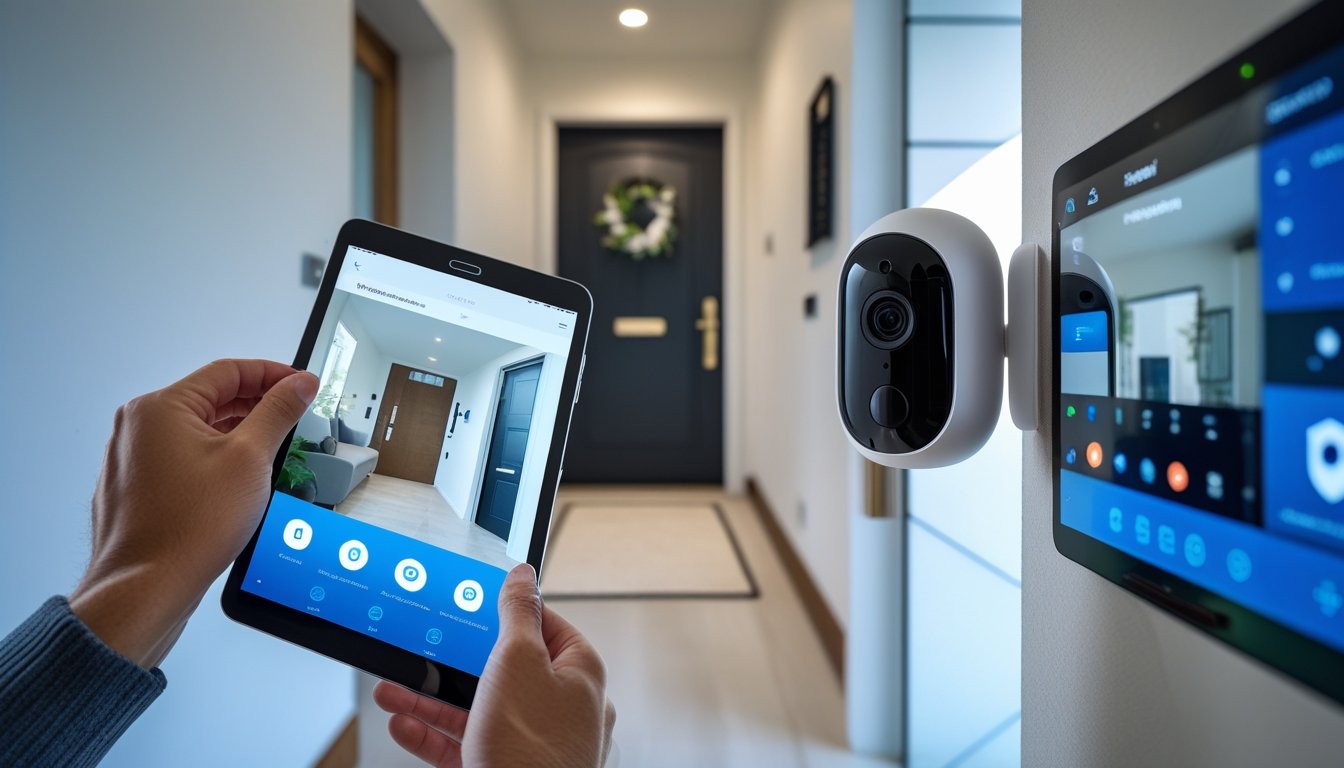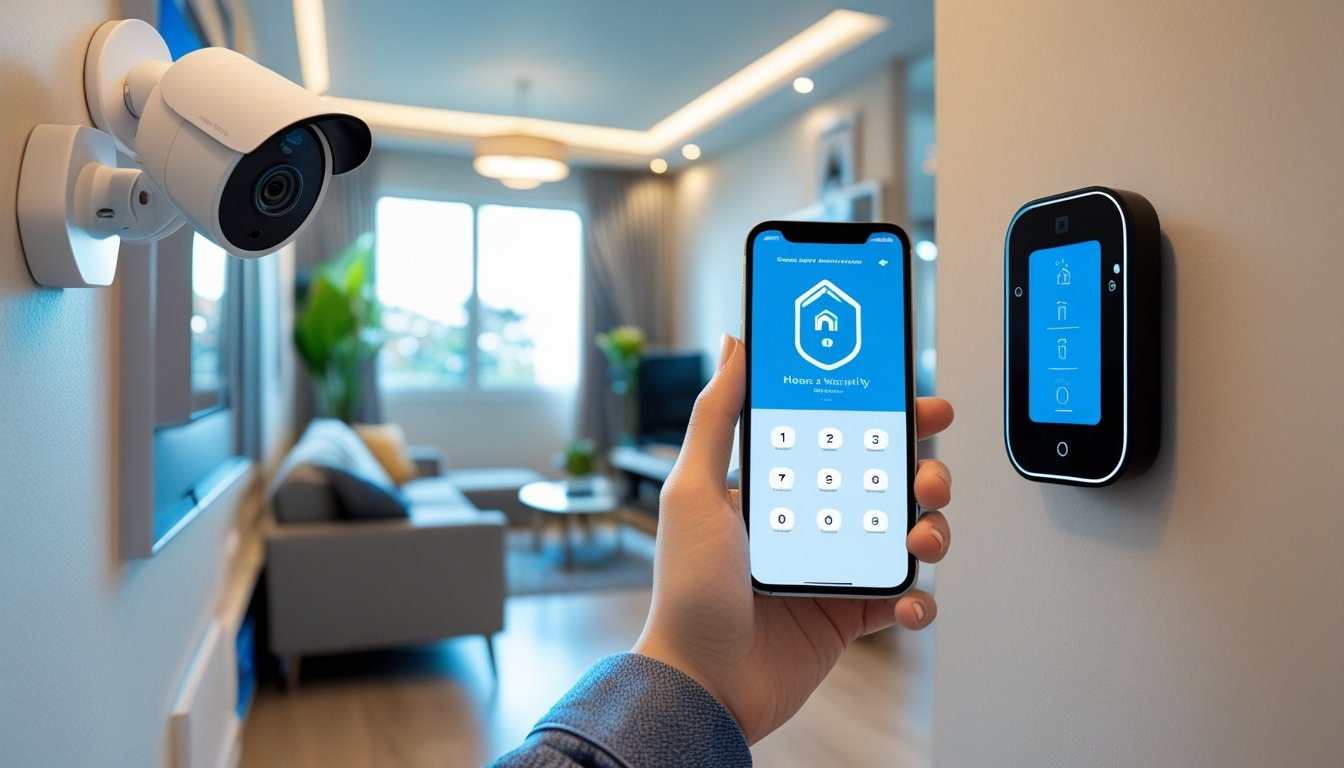Late updated: 03 Jun 2025 15:06
Written by: Elena Prescott
Guide To Upgrading Home Security Systems Affordably: Expert Tips and Solutions
Upgrading home security systems can seem like a daunting endeavour, especially when budget constraints come into play. Fortunately, there are numerous affordable options that can significantly enhance the safety of your home without breaking the bank. By focusing on cost-effective upgrades, such as smart locks and motion sensor lights, we can enjoy enhanced security without the heavy price tag.

Our focus in this guide is not simply to list products but to explore practical and budget-friendly strategies that maximise the value of these upgrades. We aim to help you achieve peace of mind through clever solutions that blend existing systems with affordable upgrades. As we navigate through the intricacies of home security, we will provide actionable insights to ensure your home remains a safe haven.
Going beyond just the hardware, we’ll discuss how to utilise monitoring features effectively while keeping costs also at a minimal level. By the end of this guide, you’ll be better equipped with the knowledge and tools to transform your security setup into a robust, budget-friendly system.
Key Takeaways
- Prioritise essential security upgrades that suit your budget.
- Optimise system features for cost-effective monitoring.
- Equip yourself with answers to common home security queries.
Essential Upgrades for Affordable Home Security

Enhancing home security doesn't have to break the bank. By focusing on cost-effective systems and simple installation techniques, we can significantly improve safety. Wireless and smart home technology integration can offer further convenience and protection.
Choosing Cost-Effective Home Security Systems
Selecting a budget-friendly home security system means carefully assessing features and costs. Cove and Wyze Home Security are excellent choices for affordability. These systems provide essential features like entry and motion sensors without a hefty price tag. We should evaluate the balance between upfront equipment costs and monthly monitoring fees. Packages like Ring Alarm offer flexibility and don't necessitate long-term contracts or high fees, making them appealing to cost-conscious homeowners.
DIY Installation and Setup Techniques
Conducting a DIY installation not only cuts costs but also provides flexibility in setup. Many systems, such as Simplisafe and Abode, offer user-friendly installation without professional assistance. Wireless systems are especially easy to install, eliminating the need for complex wiring. We can customise the placement of devices like motion sensors and security cameras to suit our specific needs, enhancing coverage areas wherever required. Step-by-step online guides and customer support can further aid in making the process straightforward and effective.
Wireless Security and Smart Home Integration
Integrating wireless security with smart home technology enhances control and accessibility. Systems compatible with Google Assistant, Alexa, and Apple HomeKit allow for seamless integration, providing intuitive voice controls and mobile alerts. Wireless security cameras with motion detection, such as those from Vivint, ensure that our homes are continually monitored. Smart locks and intelligent lighting systems can be controlled remotely, increasing security even when we are away. Utilising technologies like Z-Wave and Zigbee further expands functionality by creating a synchronised home environment.
Selecting Devices for Entry and Perimeter Protection
Effective home security starts with reinforced entryways. ADT and Frontpoint offer robust solutions that include entry sensors and high-quality deadbolts. Installing video doorbells and outdoor cameras enhances perimeter vigilance. These devices provide real-time footage and can deter potential intruders when visible. In addition, smoke and carbon monoxide detectors ensure our homes remain safe from internal threats. Selecting devices that integrate with our home security system and consistently monitoring these areas can significantly improve our overall security strategy.
Maximising Features and Monitoring While Reducing Costs
To make the most of home security systems without exceeding a budget, we need to focus on cost-effective monitoring, smart home automation, and efficient use of cloud storage. By strategically choosing and optimising these elements, we can enhance security while minimising expenses.
Comparing Professional and Self-Monitoring
Professional monitoring services, like those offered by SimpliSafe, provide peace of mind with 24/7 surveillance and rapid response in emergencies. Yet, these services can be costly, with monthly fees varying significantly. On the other hand, self-monitoring offers a budget-friendly alternative. Many systems, such as ADT Self Setup, allow us to monitor via our smartphones, receiving push notifications for any alerts.
Self-monitoring typically involves lower or no monthly fees. However, it requires a level of commitment from us to act on alerts swiftly. DIY systems often integrate with smart home hubs like the Abode Security Hub or Abode Iota, allowing us to customise alerts and responses. By carefully evaluating our needs, we can balance cost with the level of security we desire.
Affordable Smart Home Automation and Control
Integrating smart home devices enhances our security system's efficiency and convenience. Smart locks, like those compatible with geofencing and IFTTT, empower us to automate locking and unlocking based on our location. Linking these with smart home products like Philips Hue and Ecobee transforms our home into a more secure environment.
We can set smart lights to simulate presence even when we're away. Smart home hubs help unify these devices, allowing seamless control through one interface. By focusing on devices with proven reliability and good reviews, we enhance security features while keeping overall costs manageable.
Optimising Cloud Storage and Subscriptions
Effective use of cloud storage is crucial for maintaining video footage without unnecessary expenditure. Subscription plans with cloud storage vary widely in cost and offerings. We should consider plans that offer the essential features we need without paying for extras we don't use.
For example, some systems allow us to store footage locally, reducing or eliminating the need for cloud subscriptions. Regular backups via cellular or battery backup systems ensure redundancy. By choosing flexible plans, we ensure we only pay for what we truly need, helping us reduce ongoing expenses related to storing surveillance footage.
Frequently Asked Questions

In this section, we explore practical strategies to enhance home security systems without breaking the bank. We delve into affordable upgrades, DIY installation options, and ways to modernize outdated setups. This guide is designed to equip you with the knowledge to make well-informed decisions.
What are cost-effective strategies for enhancing my home security system?
Upgrading your home security doesn't have to be costly. Start with reinforcing entry points like doors and windows with stronger locks. Consider installing motion sensor lights around your property. Surveillance cameras are more affordable than ever and can be added selectively, focusing on key areas.
How can I upgrade my current home security system without incurring a subscription fee?
Many modern home security products do not require ongoing subscriptions. Opt for systems that offer local storage options, like NVRs for cameras, and use smart home integrations with existing free platforms. Check for products that allow self-monitoring through mobile apps to avoid extra costs.
What are the best value-for-money home security systems available for DIY installation?
For DIY enthusiasts, systems like Ring, Arlo, or SimpliSafe offer excellent value. These can be easily installed without professional help, and come with clear instructions. Look for bundles that include multiple types of sensors and cameras for a comprehensive setup.
Which home security system is considered the top-rated for professional-level protection?
SimpliSafe is regarded as a top choice for professional-level protection. With packages starting from £21.99 per month, it provides robust 24/7 monitoring options. The system is known for its reliability and user-friendly interfaces, making professional-grade security accessible to many homeowners.
Can I install a reputable home security system on a limited budget?
Yes, there are several reputable options for those on tight budgets. Consider brands like Wyze or Blink, which offer essential security features at competitive prices. Ensure that any system you choose includes key elements like a control panel, sensors, and at least one camera for effective coverage.
What steps should be taken to modernise an outdated home security setup?
Modernising an old system can involve integrating smart home features. Replace outdated components with smart locks, Wi-Fi cameras, or upgrade to a smart home hub that centralises control. Regular checks and updates to firmware can ensure systems remain secure and efficient.
